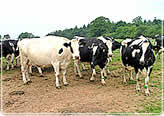
 What is biodiversity?
What is biodiversity?
The Earth contains a rich and diverse assembly of organisms. This is known as Biodiversity and was defined by UNEP in 1995:
 the variability among living organisms from all sources, including terrestrial,
marine and other aquatic ecosystems and the ecological complexes of which they are a part;
this includes diversity within species, between species and of ecosystems
the variability among living organisms from all sources, including terrestrial,
marine and other aquatic ecosystems and the ecological complexes of which they are a part;
this includes diversity within species, between species and of ecosystems

It is made up of THREE distinct components:
- Ecological diversity e.g. varied biomes, bioregions, landscapes, ecosystems, habitats, populations and communities.
- Species diversity e.g. estimates of the total number of species is between 14 and 15 million but less than 2 million have been described. Only 3% of this is made up by the plants and vertebrates.
- Genetic diversity e.g. variations in genotype provides the basis for all diversity. Variation is so great that a species is said to be genetically unique. Within a species there are varying degrees of further genetic variation.
Where do you find the greatest biodiversity?
The richest environments appear to be rainforest and coral reefs but there is considerable debate on how biodiversity is calculated. Species diversity tends to increase towards low altitudes ecosystems which are warm and wet. Tropical Rainforest covers less than 7% of the earth yet has over half of the world’s species.
Why is biodiversity important?
Fundamentally there are TWO reasons:
- It benefits humans: e.g. important drugs for medicines and genes for agriculture (animal and plant breeding, new food sources)
- It benefits other species:
Biodiversity can be thought of as a complex girder bridge in which each component is a species. Each girder is joined to another in a complex way to give support, shape and even beauty. If a few girders disappear the bridge will stand but it may lose some of its function or quality. Remove a few vital girders and it may weaken, buckle or even fall. But which of the girders are the most important? (an idea from the environmentalist – Dr Kenneth Mellanby)
Three main areas can be identified and these are:
These and other causes will be dealt with in more detail later in this topic.
Can we do anything to enhance biodiversity?
- Conservation of habitats;
- gene banks;
- eco-friendly farming;
- renewable energy sources;
- legislation and education
General website for further information:
 The WWF website
The WWF website

 Facts & Figures
Facts & Figures



 What is biodiversity?
What is biodiversity?

What's your opinion?
Average rating




Not yet rated